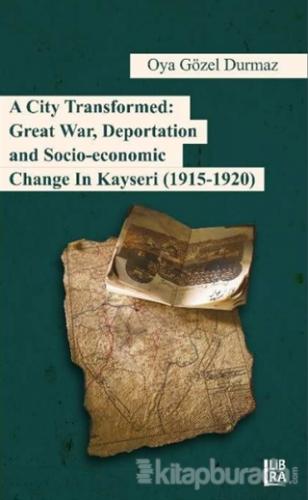A City Transformed: Great War Deportation and Socio - Economic Change in Kayseri (1915 - 1920)

The present study aims to analyze the socio-economic impacts of this demographic change, especially Armenian deportation, on the sanjak ofKayseri. In this respect, it starts with an assumption that the characteristics of the local forces had a decisive role in the development of the process in thelocalities. The basic questions that this study addresses are: How were the population policies of the Ottoman government, especially Armenian deportation,implemented in Kayseri? To what extent the local dynamics and factors, like the social and economic features of the city, and the character of the governors,shaped the execution of these policies? Finally what were the implications of this demographic transformation on the social and economic life of the inhabitants ofKayseri? As an important contribution of this study, it details how the liquidation of the Armenian abandoned properties actually happened in Kayseri byevaluating the telegrams sent from there. The analysis of the telegrams to explore the impacts of the Armenian deportations on the transformation of Kayserisanjak shows that local actors, such as the district governor, the abandoned properties commission, and the local notables, were influential in the deportation
process and also in the liquidation of the abandoned properties. As a result of the capital transfer, there was a significant transformation in the socio-economicrealm. With the establishment of two joint-stock companies in the sanjak, the Armenian assets and capital were officially allocated to the Muslim entrepreneurs. Inother words, the Armenian deportation paved the way for the rise of a new bourgeoisie and thus a new upper class in the district.
- Açıklama
The present study aims to analyze the socio-economic impacts of this demographic change, especially Armenian deportation, on the sanjak ofKayseri. In this respect, it starts with an assumption that the characteristics of the local forces had a decisive role in the development of the process in thelocalities. The basic questions that this study addresses are: How were the population policies of the Ottoman government, especially Armenian deportation,implemented in Kayseri? To what extent the local dynamics and factors, like the social and economic features of the city, and the character of the governors,shaped the execution of these policies? Finally what were the implications of this demographic transformation on the social and economic life of the inhabitants ofKayseri? As an important contribution of this study, it details how the liquidation of the Armenian abandoned properties actually happened in Kayseri byevaluating the telegrams sent from there. The analysis of the telegrams to explore the impacts of the Armenian deportations on the transformation of Kayserisanjak shows that local actors, such as the district governor, the abandoned properties commission, and the local notables, were influential in the deportation
process and also in the liquidation of the abandoned properties. As a result of the capital transfer, there was a significant transformation in the socio-economicrealm. With the establishment of two joint-stock companies in the sanjak, the Armenian assets and capital were officially allocated to the Muslim entrepreneurs. Inother words, the Armenian deportation paved the way for the rise of a new bourgeoisie and thus a new upper class in the district.
- Yorumlar
- Yorum yazBu kitaba henüz kimse yorum yapmamıştır.
